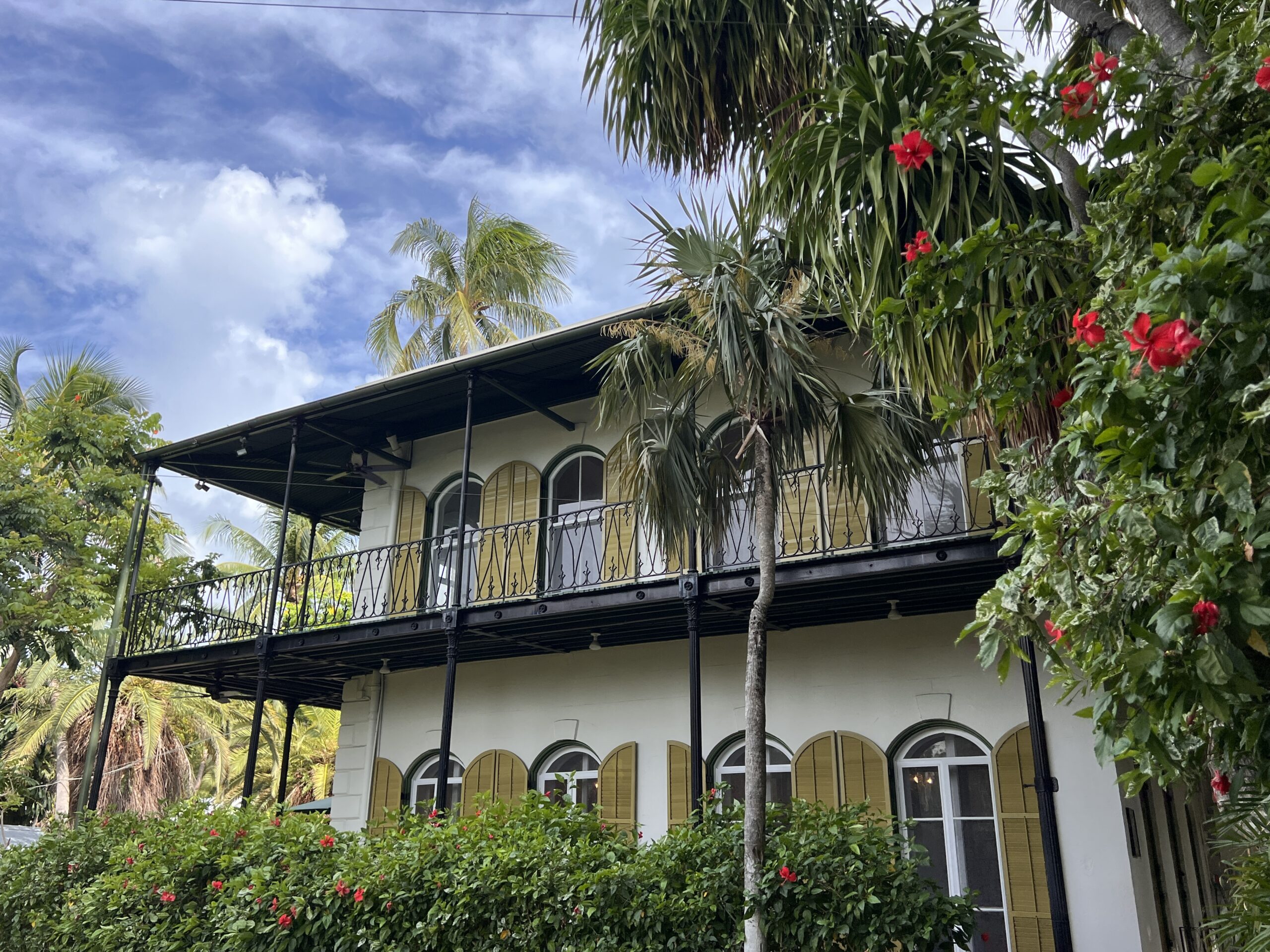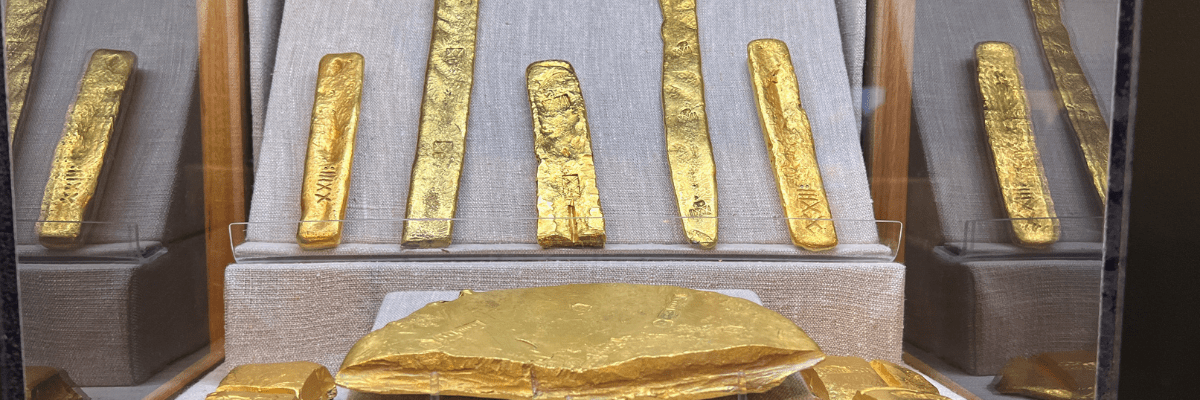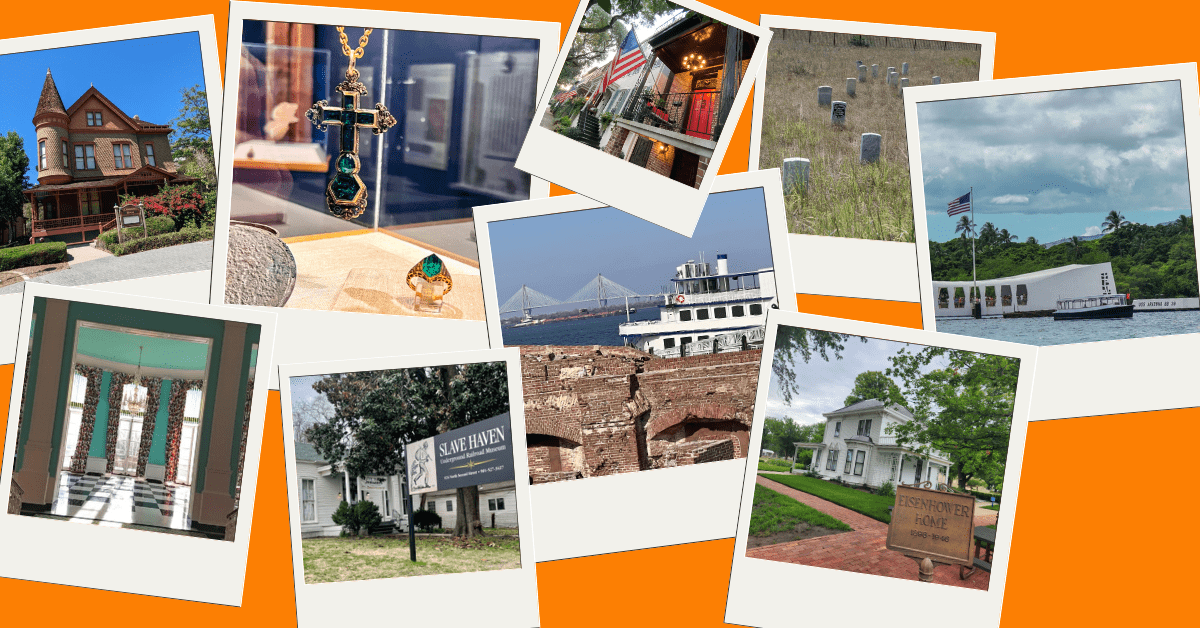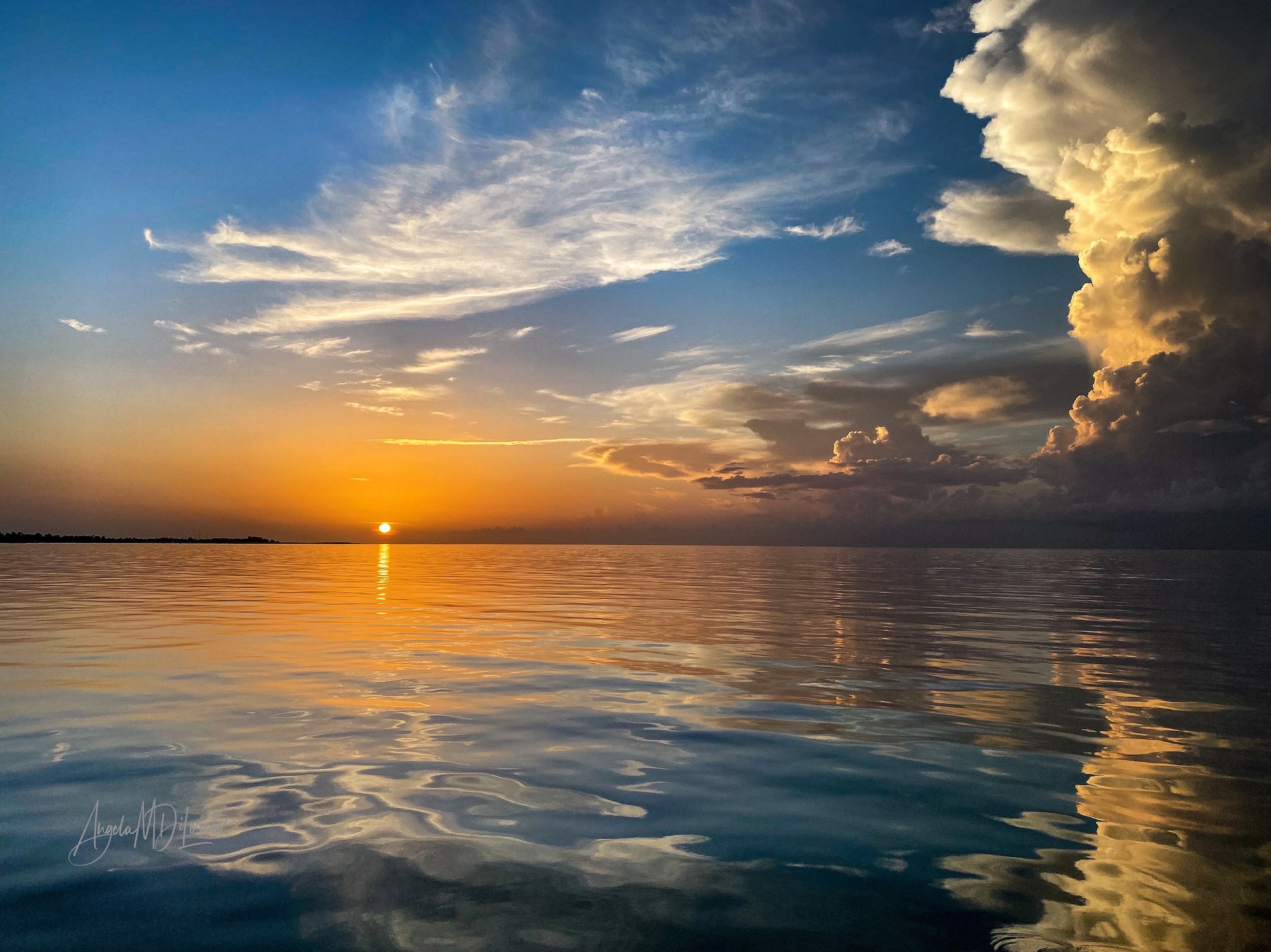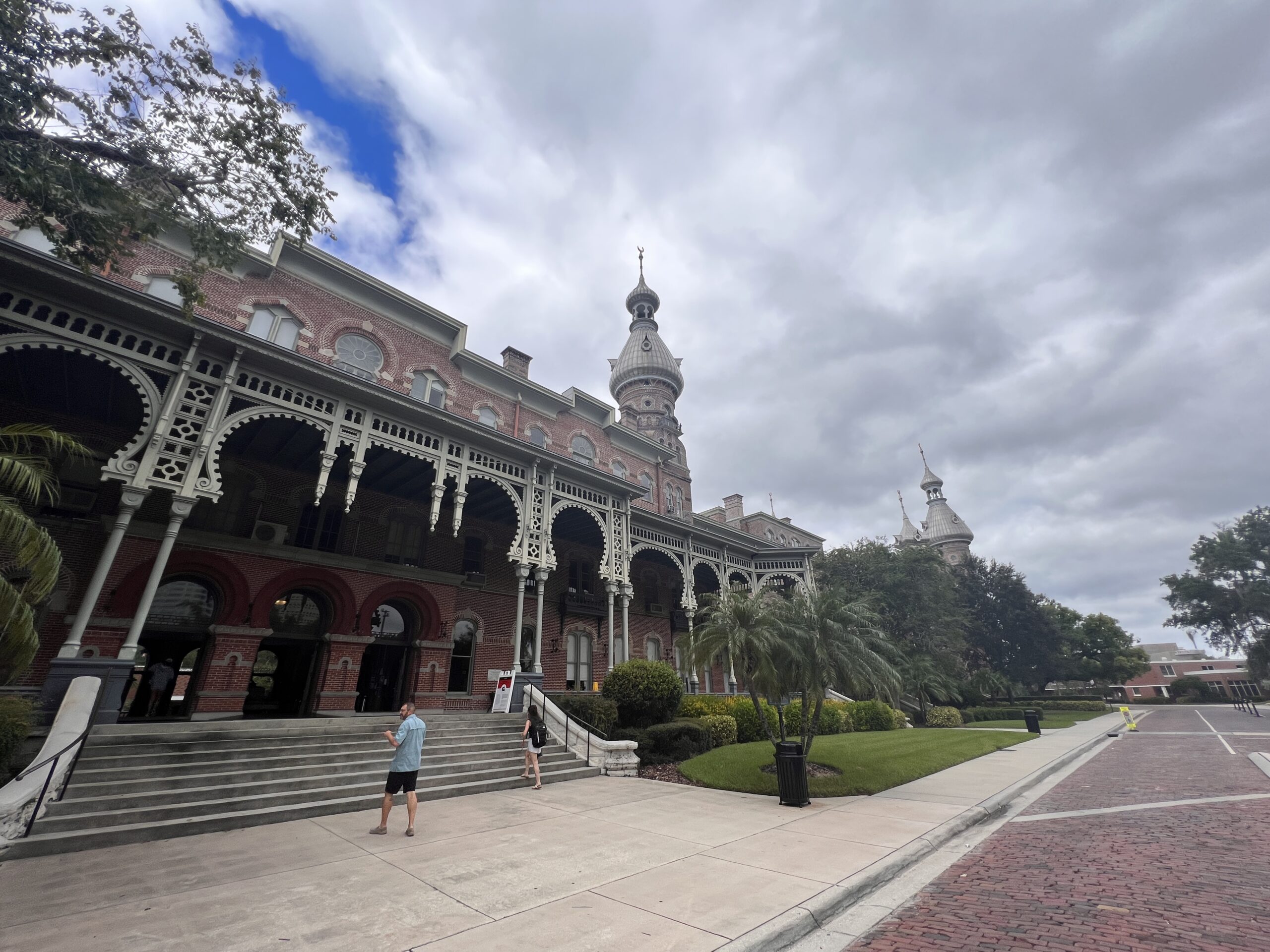Ernest Hemingway led a fascinating life marked by adventure, literary brilliance, and a passion for writing. Two of the most significant places associated with Hemingway’s life are his homes in Key West, Florida, and Cuba. These residences played a vital role in shaping his work and personal experiences. We visited both and saw some similar aspects, oddities, and of course, the charm that inspired him to write the classics.
Disclosure: Some links on our site are affiliate links. If you purchase a linked item, we will make a commission, at no extra charge to you.
Hemingway’s Key West
Ernest Hemingway’s connection to Key West, Florida, began in April 1928 after a recommendation from his fellow writer John Dos Passos, who was part of the expatriate artist community in Paris during the 1920s. When Hemingway arrived in Key West, he stayed in an apartment above a Ford showroom on Simonton Street while waiting for the delivery of his newly acquired Ford Roadster. It was during this time that he completed his partially autobiographical novel, “A Farewell to Arms,” which vividly depicted his experiences in World War I.
Join us on youtube for a tour through the Key West and Cuba homes.
Don’t forget to subscribe for future adventures!
Like many artists, Hemingway was captivated by the vibrant atmosphere of Key West. He quickly formed a lasting friendship with Charles Thompson, the owner of a local hardware store, who introduced him to the world of big game sport fishing. Hemingway’s prowess in fishing, particularly in catching Marlin, earned him a reputation among other fishermen. His daily routine in Key West involved writing in the mornings, fishing in the afternoons, and spending evenings at Sloppy Joe’s, where he would listen to the stories of locals and visitors, which served as inspiration for his writings.
During his time in Key West, Hemingway lived in a home that was purchased for his wife at the time, Pauline, by her uncle. Married in 1927, Hemingway and Pauline fully immersed themselves in the Key West culture and formed close relationships with the residents. Today, their Key West residence is known as the Ernest Hemingway Home and Museum. Built in 1851, the house showcases stunning Spanish colonial-style architecture, lush gardens, and an impressive collection of Hemingway’s personal belongings, including his writing studio.
As you enter the home, you’ll be greeted by chandeliers collected from the travels of Hemingway and Pauline, along with art deco tiles in the kitchen and Italian marble fireplaces. The house features a wrap-around porch that encircles the entire home and, during Hemingway’s stay, provided a catwalk leading to his detached writing studio. The grounds of the home are particularly spacious, especially by Key West standards, making it the largest residential home on the island.
True to Hemingway’s boisterous character, you’ll find some interesting oddities at his Key West home. One of the most notable is the fountain located between the house and the pool. This fountain is adorned with beautiful Mediterranean tiles, but upon closer inspection, you’ll notice that the pool of the fountain is actually a repurposed urinal. The story behind it is quite amusing. When the landlord increased the rent at the original Sloppy Joe’s location (now Captain Tony’s) by $1, the irate Sloppy Joe himself rallied the regulars and moved the bar down the block to its current location. In a playful response, Hemingway jokingly claimed that he had “pissed away so much money” at the bar that he felt like he owned it. He then brought the urinal home and threw it in the yard. What you see today is the result of a resourceful wife making the best of her husband’s peculiar souvenir.
As you wander to the pool area, you’ll spot a penny embedded in the concrete. Interestingly, the pool didn’t exist when the Hemingways initially moved into the home. It was during one of Hemingway’s work trips that his wife, Pauline, decided to transform his boxing ring into a saltwater pool. Upon Hemingway’s return, he was less than thrilled with the amount of money she had spent on the project. In frustration, he threw a penny on the ground, remarking that she could take his last red cent. Pauline, not one to back down, placed the penny in the concrete as a symbol and liked to tell visitors, “Those women can have him. I got his last red cent.”
Of course, the true stars of any visit to the Key West home are the cats. Approximately 60 cats call the Hemingway Home and Museum their home at any given time. These feline residents are all descendants of a cat named Snow White (some accounts say Snowball), which was a gift from Hemingway’s friend and sailing captain, Stanley Dexter. Snow White was a polydactyl cat, meaning it had six toes on its front paws. Polydactyl cats were traditionally kept on ships to control mice and were believed to bring good luck. Even today, about half of the cats at the Hemingway Home can be seen with their distinctive six toes.
Before you leave, make sure to venture behind the gift shop to see the replica cat house and the cat cemetery. It's a special tribute to the feline friends who have added their own charm to Hemingway's Key West residence.
The following books were written during Hemingway’s Key West time: A Farewell to Arms, Death in the Afternoon, Green Hills of Africa, To Have and Have Not, The Fifth Column, For Whom the Bell Tolls, and The Snows of Kilimanjaro.
Hemingway in Cuba
Hemingway’s first visit to Havana left an indelible mark on him and later became a pivotal setting in his literary works. The island and its people had a profound influence on Hemingway, fostering his deep appreciation for Cuban culture and the captivating allure of the Caribbean.
In Cuba, Hemingway resided in a picturesque estate known as Finca Vigía (translates to Lookout Farm), located in San Francisco de Paula, a suburb of Havana. He purchased the property in 1940 and called it home until the events of the Cuban Revolution compelled his departure in 1960. Nestled amidst lush tropical vegetation, Finca Vigía provided Hemingway with a sanctuary for his creativity, serving as the backdrop for some of his most renowned works, including “For Whom the Bell Tolls” and “The Old Man and the Sea.”
Hemingway discovered the estate while he was still married to his third wife, Martha Gellhorn, although they were eventually separated due to their involvement in war coverage. It was during his time in Cuba that Hemingway met his fourth wife, Mary Welsh while covering the Allied Invasion of France. The couple married in 1946 and together enjoyed the vibrant ambiance of the island as Hemingway continued to write and immerse himself in Cuban life. Finca Vigía also became a hub for writers, artists, and notable figures of the time, as Hemingway frequently hosted social gatherings at his Cuban residence. Hemingway’s love for Cuba extended beyond his personal life, as he actively engaged with the local community and took an interest in Cuban politics.
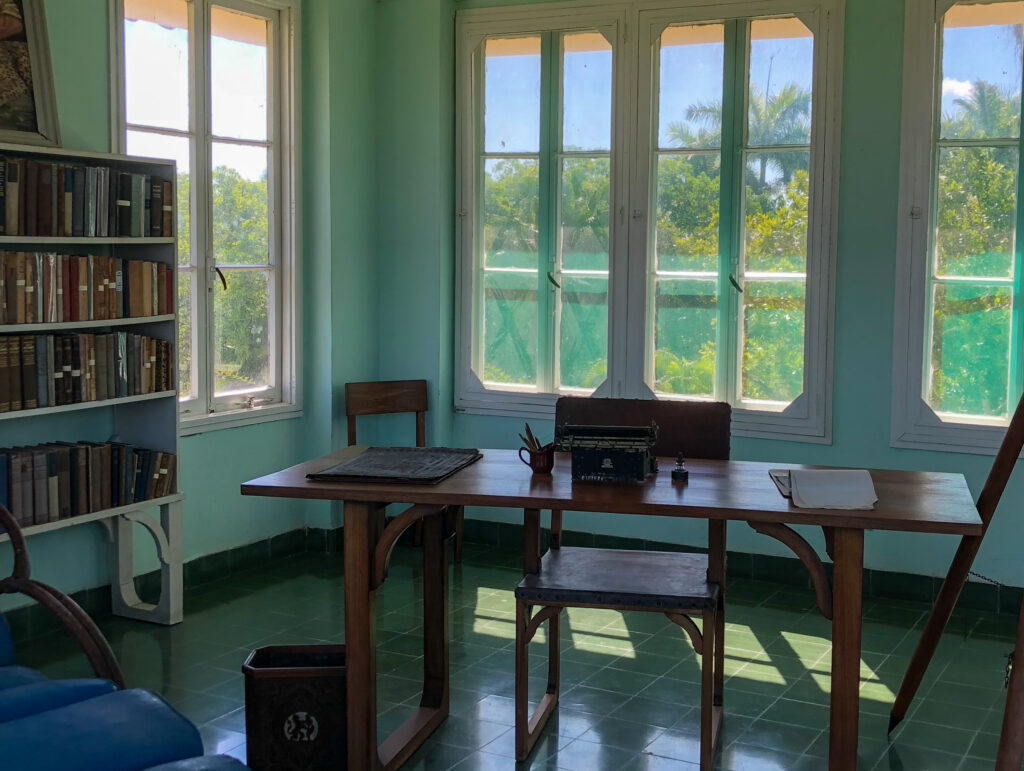
Throughout his years in Cuba, Hemingway’s passion for fishing persisted. He embarked on numerous fishing expeditions, often accompanied by his close friend and fellow writer, Gregorio Fuentes, who inspired the character Santiago in “The Old Man and the Sea.”
One enduring symbol of Hemingway’s connection to Cuba is El Floridita, a bar located in Havana. Hemingway was a regular patron of this iconic establishment, where he famously savored his favorite drink, the Daiquiri. The bar pays homage to Hemingway with a life-size bronze statue of the author seated at his preferred corner.
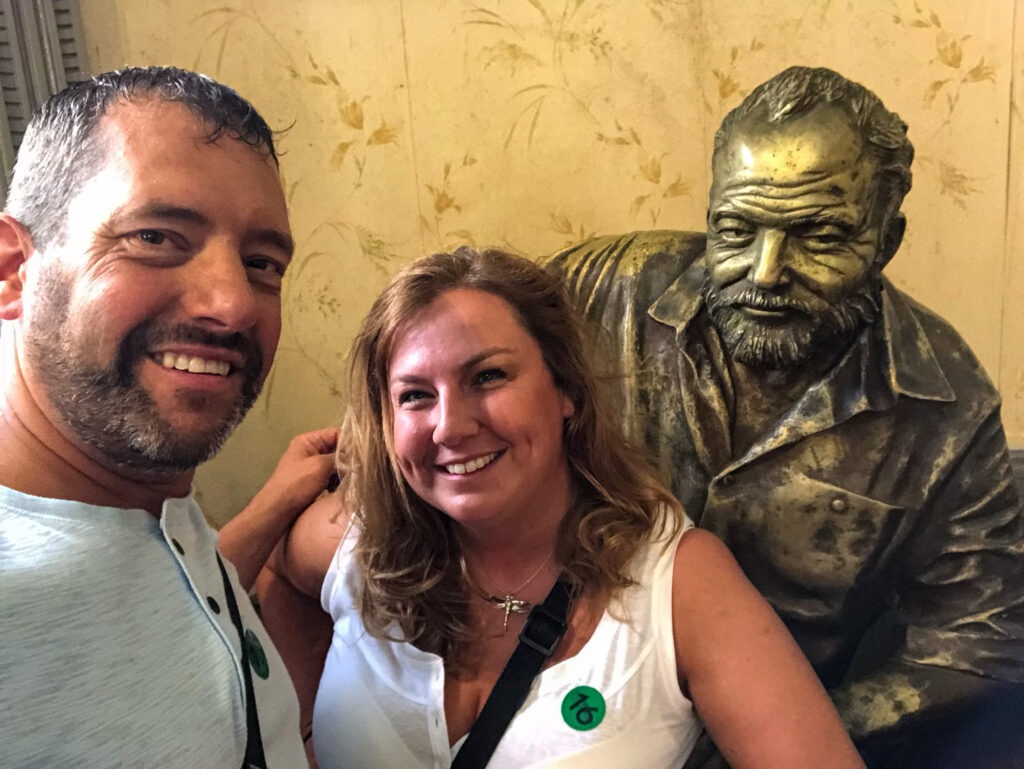
Regrettably, Hemingway’s time in Cuba came to an end with the political upheavals that swept the country in the late 1950s. As the Cuban Revolution unfolded, Hemingway’s beloved Finca Vigía was expropriated by the Cuban government. Nonetheless, despite leaving Cuba, Hemingway maintained his deep affection for the island and its people, frequently expressing his yearning to return.
Ernest Hemingway’s homes in Key West, Florida, and Cuba played integral roles in shaping his life and literary contributions. Key West provided him with a vibrant community and served as the wellspring of inspiration for seventy percent of his writing. Meanwhile, his Cuban home at Finca Vigía became a haven of creativity and an embodiment of his adoration for Cuban culture. These homes, along with the stories of his wives and the unique features they encompass, offer invaluable insights into the man behind the words and the profound impact of his literary legacy.
Ready to learn more about Hemingway’s life?

